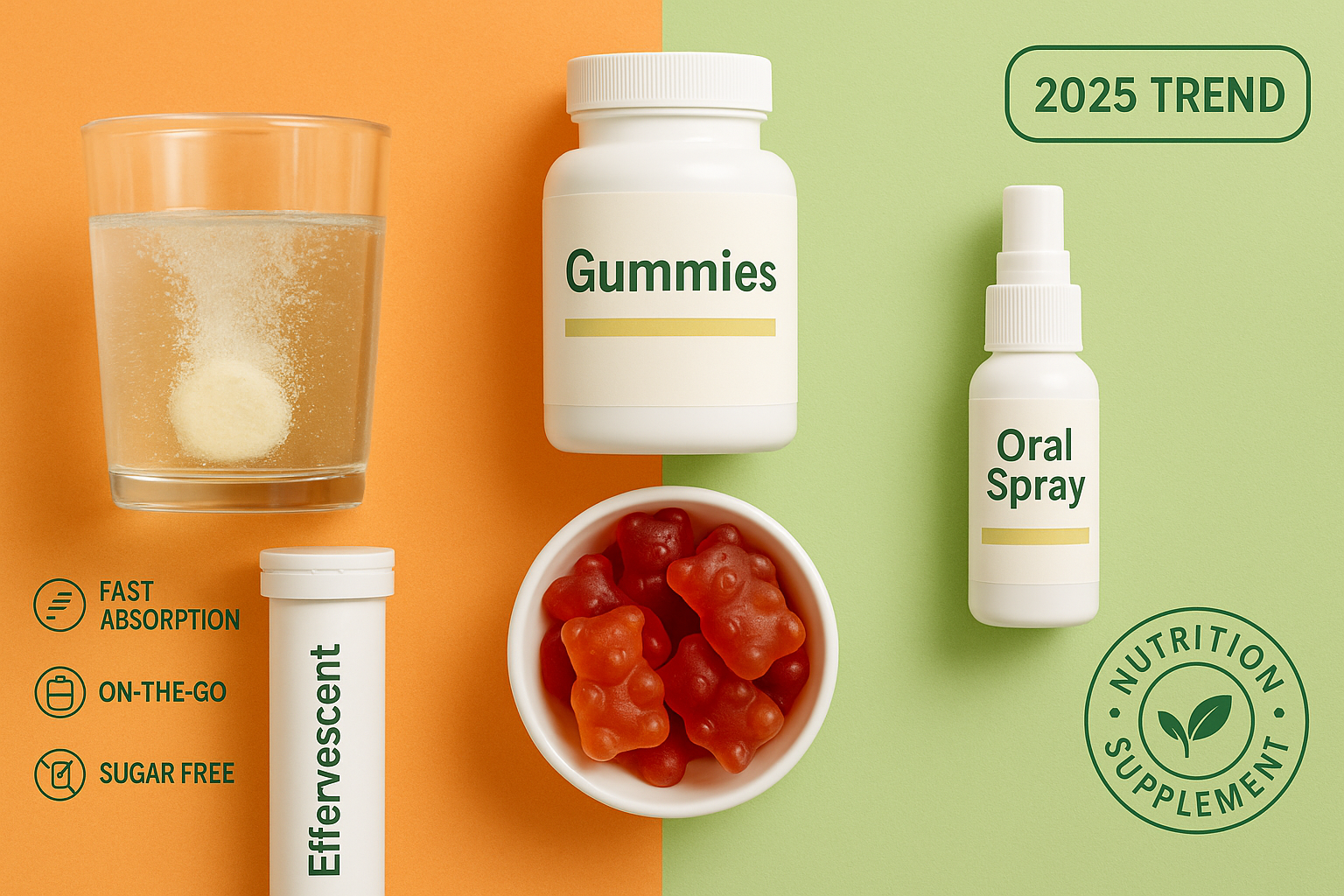Why Gummies, Effervescents & Sprays Are Taking Over India’s Supplement Aisle (2025)
India’s Supplement Formats Revolution
India’s supplement scene has transformed—from plain multivitamin tablets to beauty collagen powders, gut-health shots, magnesium sleep tablets, and playful gummies. Social-first brands and influencer-led education fuel this shift, alongside real consumer needs like taste, convenience and pill-fatigue.
What’s driving the formats revolution?
- Adherence: People stick to tasty, easy formats (gummies/effervescents).
- Experience: Effervescents offer faster dissolution and refreshing taste—great for vitamin C, electrolytes, or amino blends.
- Precision: Sprays/drops help micro-dosing B12, D3 or kids’ formulas.
- Portability: Sachets and stick-packs suit Indian on-the-go lifestyles.
Pros & cons by format (quick guide)
- Gummies: Highly palatable; ideal for vitamins/plant extracts at modest doses. Watch sugars/polyols, heat stability, and dose limits per piece.
- Effervescents: Rapid dissolution; good for high-dose vitamin C, electrolytes, some amino acids. Check sodium load and sweetener profile.
- Oral sprays/drops: Convenient for B12/D3; useful for those with swallowing issues. Ensure accurate metering and child-safe caps.
- Capsules/tablets: Best for higher doses, multi-ingredient stacks, or sensitive probiotics (with protective tech).
- Liquids/shots: Great for botanicals and combos; require robust preservation, pH control and label clarity.
A word on probiotics in candies/gummies
It’s possible, but survival depends on smart strain selection, water activity control and packaging. Many probiotics still perform best in capsules or sachets unless the gummy is engineered for viability in Indian conditions.
Sugar, sweeteners & “clean label”
Consumers are sugar-aware; look for reduced-sugar gummies (isomalt/stevia) or effervescents without excessive sucrose. Always disclose sweeteners and allergen statements clearly per Indian rules.
FSSAI: formats vs claims
India’s framework covers multiple functional food categories (including foods with probiotics and prebiotics). Your format doesn’t grant broader claims—compliance and scientific substantiation still govern what you can say. Also remember the self-declaration requirement before publishing food ads (a 2024 development to deter misleading promotions). Build claims around structure/function, not cures.
Where Ayurveda fits beautifully
Ashwagandha, Shatavari, Amla, Brahmi and Curcumin adapt well across modern formats:
- Gummies: Ashwagandha, Amla (taste-forward).
- Effervescents: Amla + vitamin C, electrolytes + Shatavari for active women.
- Sprays/drops: Tulsi or curcumin oils in emulsified drops.
- Capsules: Higher-strength standardized extracts or multi-herb blends.
Choosing smarter as a consumer (and brand)
- Dose reality: Can your active reach the required daily dose in that format?
- Stability: Heat/moisture testing for Indian climates; protect with desiccants/foil.
- Transparency: Named extracts (e.g., “Ashwagandha root extract 5% withanolides”), declared solvent systems.
- Taste & texture: Especially for long-term adherence in women’s health and kids’ nutrition.
- Quality systems: HACCP/GMP facilities and batch-wise COAs.
FAQs
- Q: Are gummies as effective as tablets?
A: For many vitamins and botanicals at modest doses—yes. For high-dose minerals or sensitive probiotics, capsules/tablets often win.
- Q: Do sprays absorb “better”?
A: They’re convenient; evidence varies by nutrient. Treat them as an alternative route, not a medical shortcut.
- Q: What about claims like “treats PCOS/diabetes”?
A: Those are drug claims. Stick to food-appropriate language and comply with India’s nutraceutical categories and ad rules.

Leave a comment